I think this guy needs no introduction. He is the man with the beard. The Canadian face of ultra running. He is the HURT100 course record holder and he has a very special connection to The Barkley Marathons. Husband, father, runner, race director, ambassador…Gary Robbins.
The first time I’ve met Gary was during my Squamish 50 participation in 2013. I’ve got to know a very passionate person, 100% addicted to the sport and a real ambassador of trail and ultra running. I am very proud to have had the chance to drink some beer and wine with this guy during my four stays in Squamish.
First of all Gary thank, you very much for your time and getting me the chance to interview you.
Absolutely Steve, I am glad we were able to make it happen.
At the moment you are recovering from a stress fracture, right? And the only way to do sports is cycling and maybe some strength work.
Yes, a sacral stress fracture. Exactly. Unfortunately, I didn’t know anything about sacral stress fractures before December and now I know far too much about them. They are not good.
The average recovery for a sacral stress fracture is four to six months. I thought when it first happened it would be a six to eight-week stress fracture and I learned very quickly that that’s not the case. I’ve had to be very patient over the winter month not make a mistake and I was basically told, if you try to get back at things to quickly and you reinjure, it can get far worse and you can miss an entire year.

How hard is it for you to be not able to run and only to ride the bike instead?
Through January and February, I held out this far fetched hope that I was going to have a miraculous recovery and still be able to train for two or three weeks on foot and get to The Barkley. On February 26th I had a CT-scan and I was hoping they were gonna say: “You can now do two or three weeks of specific training and go to Barkley and hope for the best.”
That CT-scan showed that things are healing which is a very good thing but, of course, it was only about 50% there as it should be and that I wouldn’t make it to Barkley.
For January and February, the motivation stayed high, because I was trying to get myself a chance to get there. So the biking wasn’t as difficult as I thought it would be because it was all I could do when I was trying to get to Barkley.
But March was kind of a pissed month because my goal race was gone I wasn’t gonna be there. Even all the weather was really nice in March I had an average training month because the motivation had really taken a hit. But now in April, I am feeling much better about things and I have about four to six weeks left to go and I’ll be back to running. I definitely fall in love with the biking but I still obviously a runner and can’t wait to get back to running.

So in February you still thought about running this race, with six weeks left and way less training mileage compared to the years before?
I was on the bike 100% of the time for two months (Dec 26th until Feb 26th). I thought, that if I got the go, I would be able to do a quick build circle and get the specificity for Barkley, but that wasn’t the case. So I haven’t run a step since Dec 23rd.
Garys first Ultra Race
Switch Back to the far beginning: Your first ultra race was in 2004, the Stormy trail race. Am I right? You placed 20th overall and 15th men. How was your first ultra trail race?
Yes, it was the Stormy 67k race. I was very fortunate that I had a mentor, a good friend, who is very experienced and he really helped us, myself and a friend, who was doing our first races, to not get carried away and make any mistakes early on.
But about kilometre 40 I decided I didn’t want to listen to him anymore and ran away from them. At about kilometre 55 I paid the price for that and I really struggled significantly to get to the finish line and just stay ahead of them.
My goal was to finish top 20 and to break 7 hours. In the end, I was, I think as high as 15th late in the race but I got passed by 5 people and just held on the 20th, just broke 7 hours.
It was a huge success but it was a really big learning curve.
Stormy has now become Squamish 50. It’s your race and it’s grown to the biggest trail race in Canada. So was the Stormy 2004 something like the beginning of your running, racing and race director career?
I moved to Whistler in January of 2004 and I had only run longer than 10 kilometres three times in my life and I also had never run even a 100 total miles in my life to that point.
In 2004 I moved to Whistler specifically to try to do expedition adventure racing but I had no background in anything. My friend and I were starting from scratch. The Stormy 2004 (in August) was my introduction into ultra running.
Literally three or four months before the race I didn’t even know what ultra running was. Someone had said, that there were races of these distances and it blew my mind. I didn’t even realize because my knowledge was based around expedition adventure racing which I’d seen on TV.
So 2004 was my introduction into ultra running and through training for adventure racing, I then learned, that I not only loved and preferred running but I was actually pretty ok in it. That started me down the path becoming an ultra runner. But prior to January of 2004 when I moved to Whistler I didn’t even know that people ran up for a 100 miles at a time and I had no inkling that I would be one of the people that wanted to do that. So over the coming years, I did more and got to know the community.
In 2011 the Stormy trail race, after ten years was handed to someone else and they didn’t get the race off the ground. It didn’t happen for the first time in eleven years and the person who inherited the race gifted it to me and said: „I just want the race to happen again and I can’t make it happen. So I want you, to see if you can make it happen.“ I accepted and then reached out to who has been my business partner for the last eight years now – Geoff Langford. He had a history of producing expedition races, which I used to race. So I knew him by being one of the racers in his expedition races.
Geoff and I took Stormy and I said: „I will only accept under a few conditions.“ And the conditions are: I get to rename the event, get to redesign the course and get to put my own stamp on it with no overseeing. And what I will keep is the original weekend of the race and I will want to build the community around it. But I only accepted with the agreement that it would no longer be Stormy. It would now be the Squamish 50 and that I would change the course almost entirely.
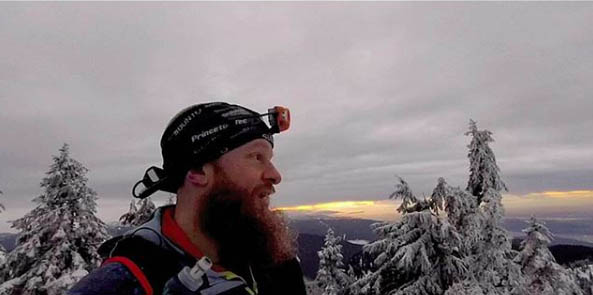
Was it maybe one of the best decisions you’ve ever made?
Well, yes in hindsight it was the most fortuitous moment of my life really because that single race did really well from that moment on. Even in the first year, we sold out with 350 runners. The race prior to that had never seen that many people. Right away by rebranding it and redesigning it we had gotten exposure into a market that the race hadn’t otherwise. A year later we decided to start a trail race series and bring three additional races to life. That has now snowballed so that eight years further on, we direct eight events and all events sell out. When combined with my coaching business I make my living entirely by creating and directing trail running events and by coaching trail running athletes.
Perfect! So your hobby has become your job?
Exactly! I love what I do. For work, I feel very fortunate to be able to do it. It is work and it is really hard work and it is really stressful work, but I would not trade it for anything.
His first 100 Miler
In 2008 you ran your first 100 mile race. It was the Stormy 100 mile race and you placed first. How did this happen?
What happened was, I did expedition racing. That was my focus for 2004 and 2005. These years was all training in short distance adventure racing to pursue expedition racing. In 2006 and 2007 me and my team, my friends, did four expedition races around the world before we finally finished a full expedition course as a fully ranked team. Through this process, it costs a lot of money and you got all these different pieces of gear. It’s just very convoluted with how you spread your time thin between anything. I had promised myself that when we finally finish an expedition race as a fully ranked team I was getting rid of everything but my running shoes. And I was going to become the runner, that I felt I want to and could become through that period.
In August of 2007, we finished the XPD Australia. It was about 800 kilometres long and we finished as the 14th or 15th overall team. And then I promptly flew back to Canada and sold my kayak and got rid of my mountain bike and went straight to running.
In 2008 I now for the first time ever, in four years of training for things, was just a runner. I had always been really focusing on kayaking, running and mountain biking prior to that. In 2008 I ran my first ever 100-mile week of training and I ran my first ever 100-mile race. Actually, the craziest thing is, my first ever 100 mile week of training was three weeks before my first ever 100-mile race.
I lined up at Stormy 100 and certainly what I had learned through expedition racing was how to manage yourself through the highs and lows. Yes, it was my first 100 miler but I already had a lot of experience with how really deep you can go into suffering and still be ok and still feel better within a few hours.
So I think I had a really good insight into what that emotional experience was gonna be where most 100 mile runners that are running their first race have no idea what the depths of the sphere really feels like. So that benefited me and I also was a pretty smart runner. I wasn’t tempted to run someone else’s race. For that race I let the lead runners go, I did my own thing, I didn’t step into the lead until about mile 40 I think. There were only 35 runners. It wasn’t like it was a super deep field. There were some good local runners for sure but it wasn’t like there were a ton of people. The other thing about that race was from mile 40 until the finish I run entirely by myself. I didn’t have a crew, I didn’t have a pacer, I was entirely solo. There were no more other runners around. It was a very unique experience and one that I actually really cherished for how I was all alone for all of it and still managed to reached my race goals.
A funny thing is I actually said to a friend of mine. So the 50-mile race started at sunup the next day and my goal was to finish the 100 miles before they started the 50-mile race. And I got in with 19 minutes to spare before they started the 50-mile race. And I nailed my race goals. I had never done the distance before but I was right on the time and the pacing that a thought I could sustain. I managed to figure out my body and mind reasonably well through expedition racing to apply it to ultra distance 100 mile running.

One year later you raced the Western States 100 and placed 49th (23:07:20 hrs) and just one year later in 2010 you placed 6th (17:06:21 hrs). This looks like a really hard effort and enormous progress.
At my first Western States, I was through 70 miles in the top 15 to 20 people. I think I was very close to being near the top 10 for about 50 miles of the race, but I had never run in heat like that before and I didn’t do any of the proper heat training. What happened was at mile 70 my body started to crumble and at mile 80 (river crossing) my legs completely gave up on me. I couldn’t even bend my legs to sit down at a chair. I walked the last 20 miles and I couldn’t walk the downhill’s forward because my quads were so seized up so I had to walk the downhill’s backwards. I think the last 20 miles of the race took me almost 8 hours.
I had shown myself that I could cover that course quickly but I also didn’t understand the environmental challenges of the race. By the time I finished, I was peeing copper coloured and my kidneys were shutting down. Like everything about it was a really bad experience but I stuck with it and finished it purely off of my expedition background of just being too stubborn to quit. I was really pleased with that finish because it wasn’t very easy. I think most people would have quit on that day.
But I took away everything I needed to apply for a year to my training and to come back a year later. And one of those things that were unique about that is also I learned, you needed to consume much more viscous calories in a hot race because your blood is not in your stomach it’s in your extremities. So I started training with consuming gel because that was the way that Karl Meltzer and a bunch of these other runners were doing things. The following year in 2010 when I finished 6th I had about 38 gel during the race. I think that is totally gross that I wouldn’t want to do that again but I trained not only my running, but I trained my stomach and I trained everything specifically for that race to get that result.
Also a very special race in your life is the HURT 100. You are still the course record holder. What’s the story behind you and the HURT 100?
That was the second 100 miler I ever did. I did the Stormy 100 and then I was working at a run shop at the time and I was looking up options for another race. I saw this race in Hawaii and I’ve never been to Hawaii before. Hawaii from Vancouver is quite cheap. Me and my wife have now gone a dozen times and we’ve never spent more than 450 dollars to get there and it’s a 6-hour flight and you’re on the beach. It’s a very easy destination for us. So I’ve never been to Hawaii and I wanted to go and I saw the race and I signed up and it looked really technical.
I knew from my local trails in North Vancouver that that was what I was good at. So I went to the HURT 100 in January 2010, nobody knew who I was and I again ran my own race. It wasn’t until mile 30 that I stepped into the lead and I ended up running 20 hours and 12 minutes which was better than Geoff Roes course record at the time and Geoff was becoming the dominate force that he was many years right in that period. Everybody knew his name and I couldn’t believe that I had just broke his record.
I was very methodical. I had all of the course record splits on all of my drop bags and I was targeting and running specifically for a course record from the start of the race. And I did it and that catapulted me into people actually started to know who I was. When I went to Western States six month later I was picked as a solid racer and brought up in front of the crowd right before the start of the race. They brought me up with Anton (Krupicka) and all these other famous runners at the time, because I had this result in Hawaii and had won my first two 100 mile races. Even though I finish 49th at Western States it was a disappointment in myself and now people around were expecting more from me at that race.
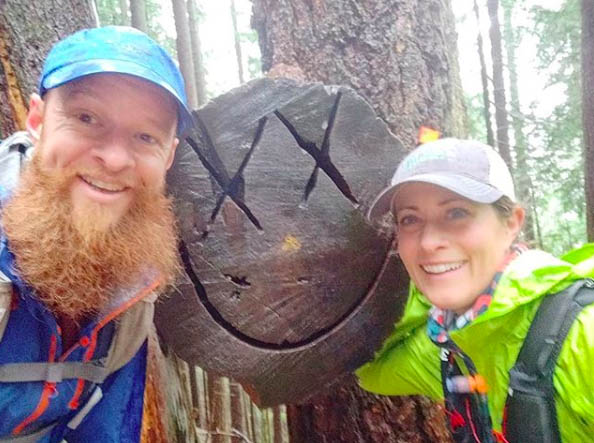
The Barkley Marathons
The other very special race in your life is, I think everybody knows it, The Barkley Marathons. You’ve been there three times (2016, 2017, 2018). Your whole training was focused on this race, everything was adapted – 120%. As we figured out before, you are a very talented runner. So winning The Barkley Marathons gives you no prize money because there is no prize money. On the other hand, as a talented runner you can race races all over the world where you can earn a lot of money. So what is so special for you, that you put everything into this one race, without getting any financial benefit at the end?
For years early on I dreamed about being able to be a paid runner and to make money, make a living as a runner. I learned that the Canadian is smaller than the Californian market. We just don’t get the same benefits that a lot of the American runners get. Yes, you can see internationally successful athletes coming out of Canada. The actual overall support pales in comparison to the United States, which pales in comparison to Europe. It became evident early on for me that it was going to be beyond a long shot for me to actually make reasonable money as a runner in Canada.
Now I am really thankful for that fact that that forced me to find other avenues to make a living and that my life ended up not becoming tied to running. Certainly, there are exceptions to the rule. Ellie Greenwood became one of the top runners in the world and she got paid because that’s what happens when you are the absolute best. But I felt like I was a tier or two below that and to get to that point I needed that support and that support wasn’t forthcoming. So I carved out a career doing other things within the sport and found a way to make a living of ultra running and trail running that isn’t tied to results, which I am very proud of. Doing that it kind frees up my ability to pursue things that are meaningful to me and not necessarily as meaningful to your sponsors. If you got someone paying all of your bills they gonna have a very strong say in where you go and what you race. It’s probably gonna be challenging to convince them that a race with 40 people in the backcountry of Tennessee, where not that long ago nobody was watching, was a good idea.
In fact, the funniest thing about this is when I first told my local representation of Salomon, that I was going to the Barkley they had never heard of it. It’s funny now because everybody pays attention but it wasn’t that long ago that it was a totally obscure race. So he looked up the race and he comes back to me and says: „OK yeah, it seems like a weird race but there are only 40 people there. Is that right? Does this really make sense for us and you?“ And my response was: „No no, trust me it’s a big deal. It’s a big deal to get in. It’s definitely different.“ Now, four years further along obviously they and I have reaped all of the benefits of how famous The Barkley has become.
I think the statistics I received shows that my second most famous Barkley attempt was, that Salomon saw at one point there were over 27 million media impressions around me and the race. When you target a paid campaign they’re looking for about 8 to 9 million impressions. It definitely catapulted everything into the stratosphere.
Now The Barkley for me was something I heard off when I was doing expedition racing. Because in the expedition world everybody is talking about the hardest things that they have ever heard of. So I learned about Barkley, even kind of prior to learning about what 100-mile races really were. It was just this mythical thing that was unattainable. So the seed was planted for me quite early and then I transitioned to running and then I won some races and then I thought: „Oh this Barkley thing seems like a good idea.“
I was really lucky for the fact that I applied. Going back quickly. I was going to apply for The Barkley in 2010. The year I ran Western States I was going to apply for The Barkley that year to hopefully run it in 2011. And then I broke my foot in a fall and I broke it a second time and missed all of 2011 because I was on crutches for 8 1/2 month. It took me 2 more years to get back to be as fit as I needed to be. 2013 was the fittest I’ve ever been, it was the best race calendar year I’ve had and then I started once again thinking about The Barkley. I was fortunate that I applied for Barkley in 2015 and I got in in 2016. This was immediately before the big Barkley documentary had gone to Netflix.
I was the last group of people that got into Barkley before it got superstar and famed through the documentary that went out and everybody saw. I think if I had even waited another year it would have been very difficult for me to get into the race because there were twice as many people applying for the coveted 40 spots.

And now you are going to race this race until you have finished it?
Yes! Exactly! Absolutely! It’s been quite the right to myself parallel The Barkley a little bit. The Barkley was known by people and respected by people, as was I. All that once the Barkley and myself kind of reached a level of notoriety that was unexpected for both of us. Then it was tied directly to my 2017 run which now lives in for me because of the finish.
I catapulted into a name that people now knew where they didn’t before and The Barkley catapulted into. Now the average person really knowing what it is when they didn’t otherwise. I have realized, good or bad, that my entire running legacy is going to be predicated on The Barkley, because I’m either going to be the guy who just missed 6 seconds the wrong way or I’m gonna be a finisher. That’s it, there is no black and white. That’s it! That’s the only way that I’m going to be known as an athlete now. Everything else that I’ve done, everything else that I’m super proud of, that I’ve accomplished, will take a distant second to that script. So that actually kind of plagues me a little bit, because I’m stuck and I’m stuck in a race that I have had a mix of unfortunate luck and the struggles with getting to the finish line.
I easily could have not only finished in the first year that I did it but in the second year that I did it as well. When we did our film tour (with Ethan „The Ginger Runner“ Newberry) I came away from that watching that film 25 times and seeing two lost opportunities, not just one. It was a weird stroke of faith that has led to now for years in having just missed the race again and still needing to talk about something, that I really truly thought was going to only be a one and done. I thought I would be able to finish it in the first year. I never for the life of me thought it would be a big deal. I wasn’t looking to get notoriety through this race. I wanna to take it off and then go focus on the other thing that were meaningful to me. But now the problem is, it’s going to define me, and I can’t in my heart, let it define me as a failure, it has to define me as a success.
Wow! Now I’m Speechless!
Yeah, it’s not super fun at times.
Do you think that the media coverage of The Barkley is good for it or is it worse for the race?
I believe that Laz has done a really good job at extracting what is necessary from the media while keeping them at arm’s length. What I mean by that is: Frozen Head State Park were on the fence about allowing The Barkley to happen at all. There was one year in particular where they didn’t give them the permits for the race. He has to tow a very tight broken line of showing the park, why they should have the race, without having too many people there that overwhelm the race experience on the weekend itself.
Laz needs media attention, the park needs to be known and they need visitors to go to the park and spend money. And he single-handedly has done that through not only The Barkley, but The Barkley Fall Classic. The negative side with the media is when they show up during The Barkley and they’re just in the way and they’re just writing stories that are completely inaccurate because the person that’s writing it has no real understanding on what’s going on.
I think the media is a necessary evil and I think Laz has really done a great job towing that line and keeping them on board while keeping them at arm’s length.
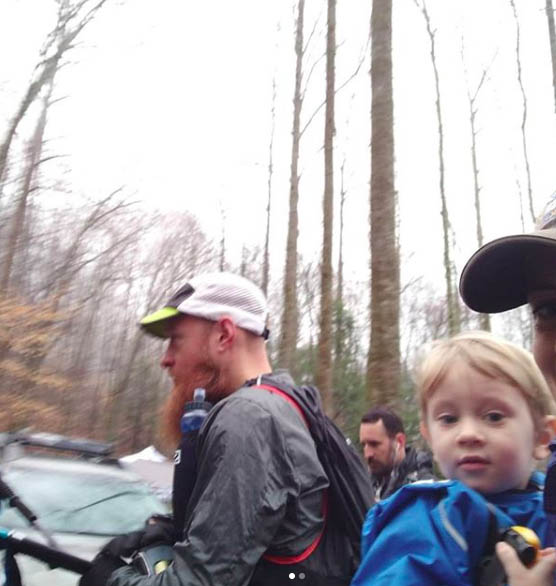
How is your relationship to Laz? Do you stay in contact out of the race or just a short period before and during the race?
I flew Laz up here 15 months ago during the film tour and he came to North Vancouver and I put him up in an Airbnb and we got to spend a week with him. We hold a Mini Barkley here in North Vancouver where we hid five books in the forest and had a bunch of orienteering stuff. It was wonderful and I really got to know him a bit deeper. Yes, I consider him to be a friend. It’s not like we message each other regularly but we also don’t just see each other on race week and don’t just message on race weekend. And more than anything I’ve really been fortunate to have gotten to know the softer side, the personal side of Laz, the Gary Cantrell side of Laz. Through that, I have no doubt that he cares about me and my family and really genuinely wishes for us to finish The Barkley. He wants that! I would say outside of myself, my wife, my family, nobody wants me to finish more than Laz. And that’s a really special thing to know deep down inside.
I think he is a really warm person. Normally people see Laz as the sadistic person but I think he is a really warm person knowing exactly what he is doing.
100%! My take is that Lazarus Lake is his alternate ego and it is the representation of the hard-ass sadistic person that he isn’t himself and that he can’t be. And when he is in character as Lazarus Lake he can be a hard ass, but when he is himself as Gary Cantrell he is a bit of a softy.
How big is your training effort before The Barkley?
Well, I don’t track it on distance I track it all on vertical (and time) for Barkley. What I would normally do over the last few years is, I would have a running block in November and December, running or skiing depending on the year. Trough the months of November and December I’m probably doing about 40 to 45 hours of training. And then, when I go into January and February I start to specify a bit more for the race.
That specificity involves a three-week build and a one-week recovery, that’s how I would normally structure my training. The peak on the last build, the last big week before Barkley, I’ve gotten up to, I think 65.000 feet (20.000m) of vertical gain and loss within a seven-day span. Including my last workout with 20.000 to 25.000 feet in a single overnight session (hill repeats at Grouse Mountain – BCMC).
From January through to March I’m averaging 25.000 feet of vertical a week and then I’m maxing out at that one week where is it up close to 65.000 with this single workout that eclipses 20.000 feet. So it becomes very much, just about vertical profile up and down.
I also learned with Strava, when they use to aggregate their top boards for like the most miles run and the most vertical run. So I was logging the most vertical but I wasn’t put on to the boards and I couldn’t understand why. I messaged a friend of mine that works there, and I was like: „Hey, I just did 40.000 feet which is 12.000 more than the first person. Why I am not on the board?“ And she goes: “ Ah I don’t know let me look into it.“ So it turns out, that there is an algorithm that is based on minimums and because my vertical was so high but my mileage was so low the algorithm cancelled me out because it said you can’t get that much vertical with that little distance. I think I had 48 miles for the week and I had like 40.000 feet of vertical. And Strava said, no that’s not legitimate in their algorithm and we wouldn’t put you on the leader board.
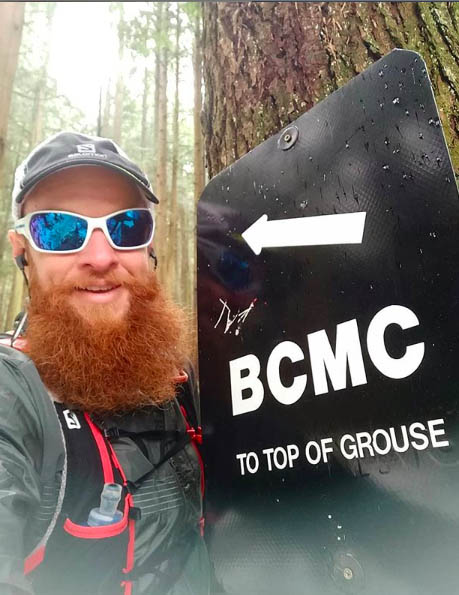
Outside Barkley
What about other races, like Gary Cantrell’s Big Dog Backyard Ultra? Is such a kind of race an option for you?
It’s funny you mention that. I would have said „no“ to that, 12 months ago, but this year my wife and I said: Once we get clear The Barkley, there is a whole host of other great events around the world that we really want to attend and Bigs Backyard is on my radar. It is definitely something that I have interest in because it is the antithesis of Barkley and I think that’s also shown.
Johan Steene who won Bigs Backyard last year has been at Barkley every year that I’ve been there and Johan is great a wonderful and tough person, but he hasn’t had the success at Barkley that he’s wanted. It just shows how specific The Barkley is but it also shows how specific Bigs is. And I think it would be an incredible achievement for anybody to do both and I think Guillaume Calmettes is probably the person who is gonna do that first.
Do you also have any other races on your bucket list?
Well, Hardrock is been on that list forever but Hardrock is the impossible race to even get into, unfortunately. That’s been disappointing. I would love to do like Ronda del Cims, Diagonale de Fous – these are races that, I believe if I had finished Barkley in the first year, I probably would have already toed the line at these races. And then other efforts like the Bob Graham Round, The Ramsay Round – those hold high a lore for me as well. That’s where my energy will eventually get directed towards. Hopefully in the very near future and not too distant future.
If you had the opportunity to become a top world-class professional runner or to be a race director – what would you choose?
I would be a race director because being at the top of the sport as an athlete, as desirable as that would be and as much as I can believe, I’m answering at this way just based at my 42-year-old self with a family. It’s so fleeting that there is really nothing guarantee down the other end of it. You can be the top athlete in the world for a few years and you constantly stressed because you’re constantly one injury away from missing a season or being out of the sport.
It must feel incredible to know like Jim Walmsley knows now today, that he is the fastest runner in the ultra running game. Or like Kilian knows every day that he is just the best athlete in the world. I mean that must be an incredible feeling, but I had created something that has none jeopardy for me and my family and just having financial security.
Being able to provide for my family is much more meaningful for me now than being a top athlete. And I can say with certainty, with confidence, that four years ago, five years ago, before we had a child, I probably would have answered the other way around. And certainly, a 100% Steve, 10 years ago, if you would ask me that question. I would have been „Top athlete, that it is all I’ve ever dreamed of in my life!“
But we all change as people and we have different assessments annually what is meaningful for us and right now where I am at today that is the most meaningful thing for me. It’s being able to provide for my family.
And family plays a very special role in your life, in your career and all the things you do.
Absolutely! 100%! I wouldn’t be happy without them and I can’t imagine my life without them.
So is your son Reed going to be a runner one day?
Reed certainly seems to be a very athletic child and he will get exposed to lots of sports, just by default because that’s what we like to do. Honestly neither Linda nor myself necessitates him becoming who we are. I want him to become a happy, healthy, confident, productive human being. If that is him wanting to be a scientist or wanted to be a librarian or wanted to be an artist, so be it. I will support my son in whatever realm he finds is his passion.
But yeah, I would love it if he is a runner and I can share adventures with him over the years, but I’m not gonna be disappointed in the slightest if that doesn’t materialize.
Gary thank you very much for everything. This was a deep and very honest interview. I appreciate it that you gave me the chance to ask the questions.
See you in September at the Whistler Alpine Meadows!
Recorded on April 3rd 2019

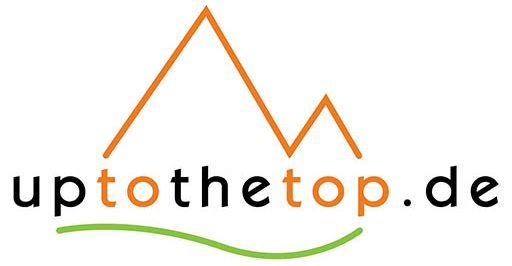

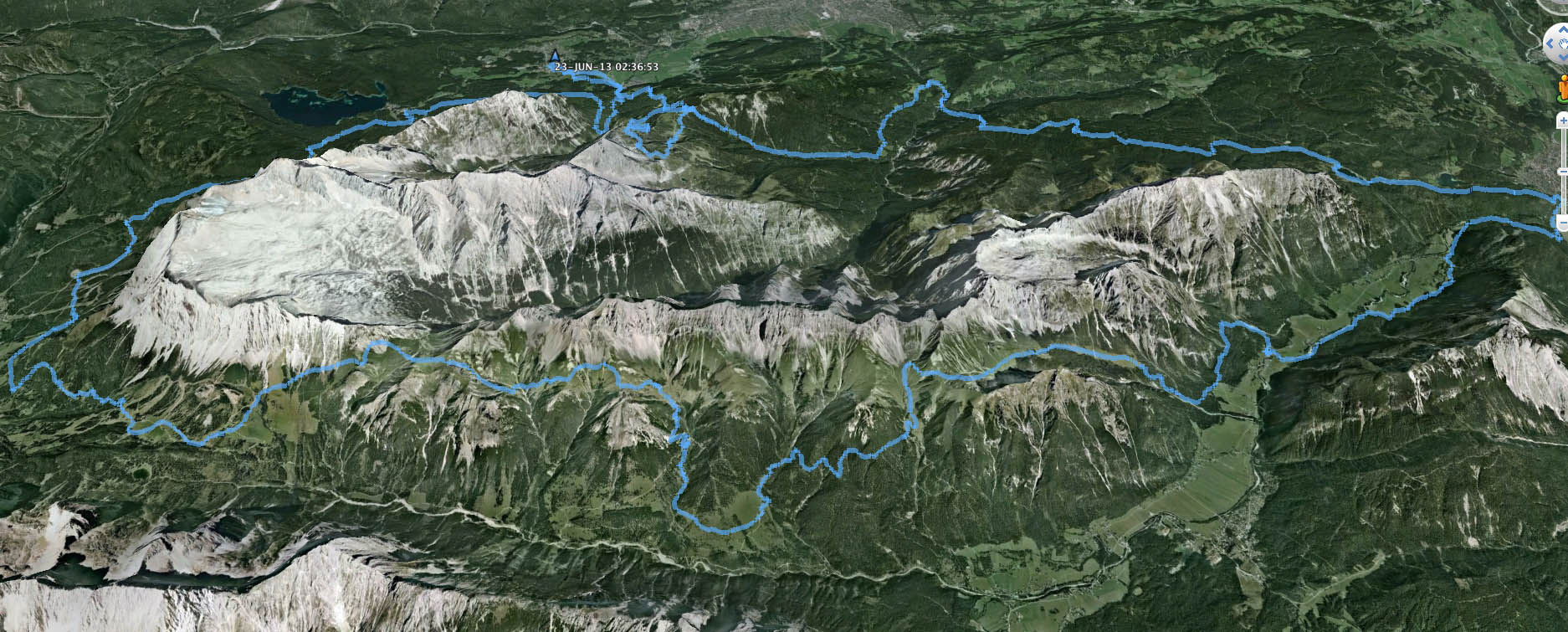
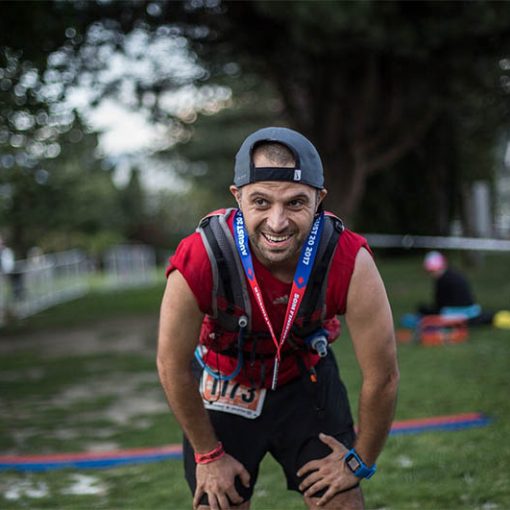
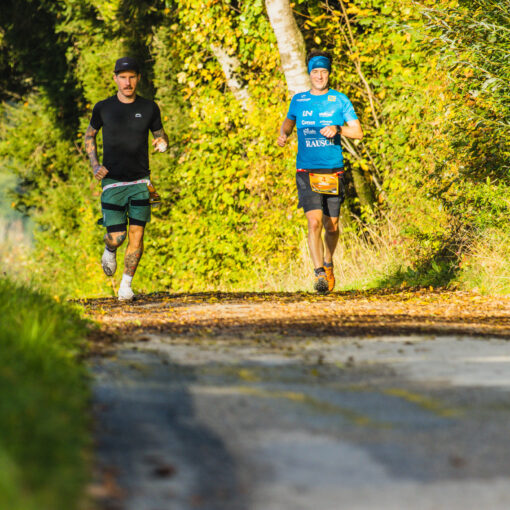
4 Gedanken zu “Interview with Gary Robbins”
Great interview, Steve!
Thanks Wing!
CU in Whistler
Hi Steve, that’s a great interview , well done! I may be interested in translating it. Can you please contact me using my email? Thanks!
Hi Charles!
Thank you.
I will contact you during the next days
Greetings
Steve